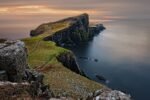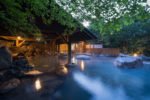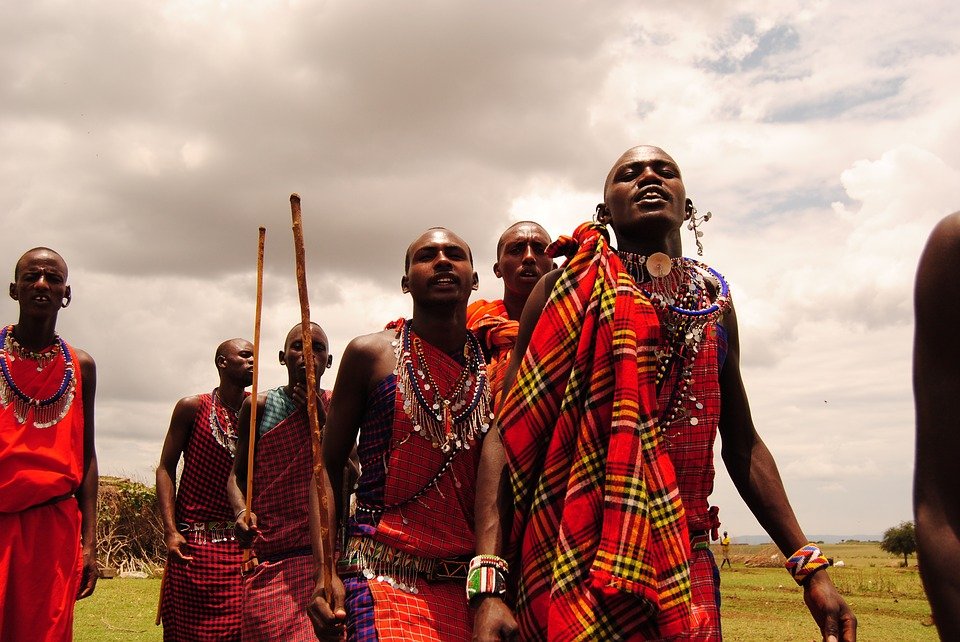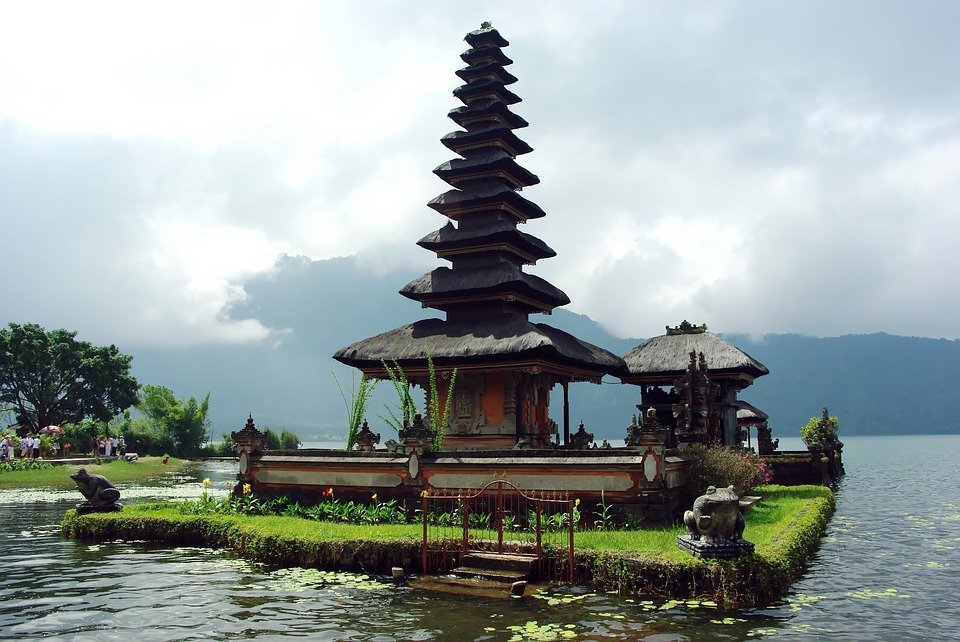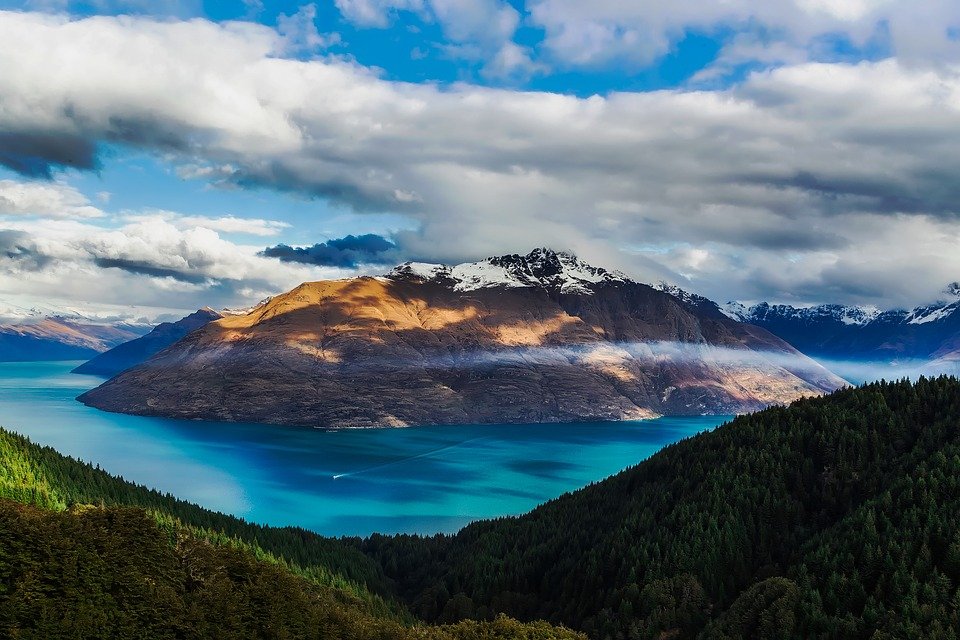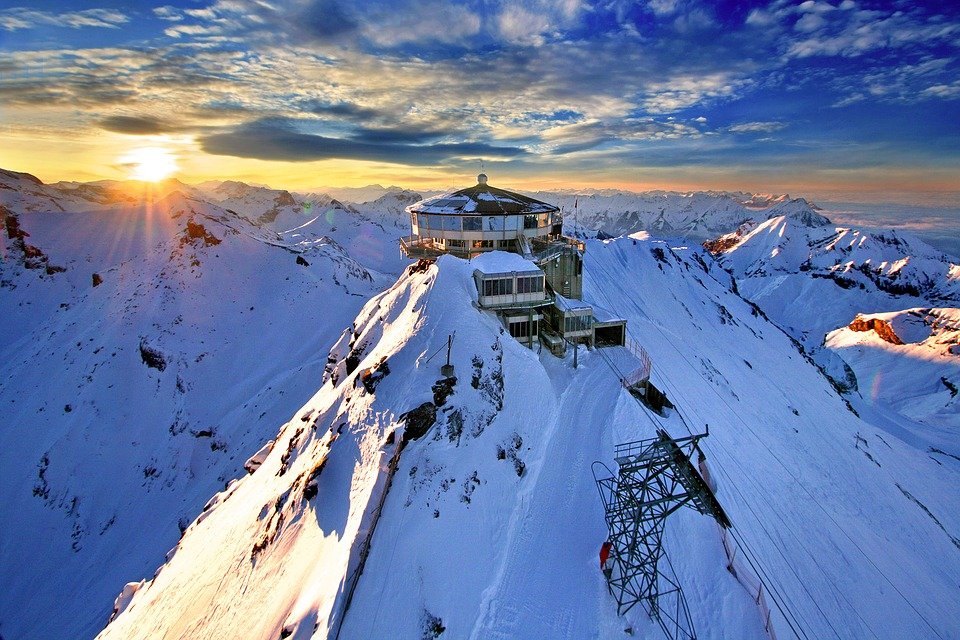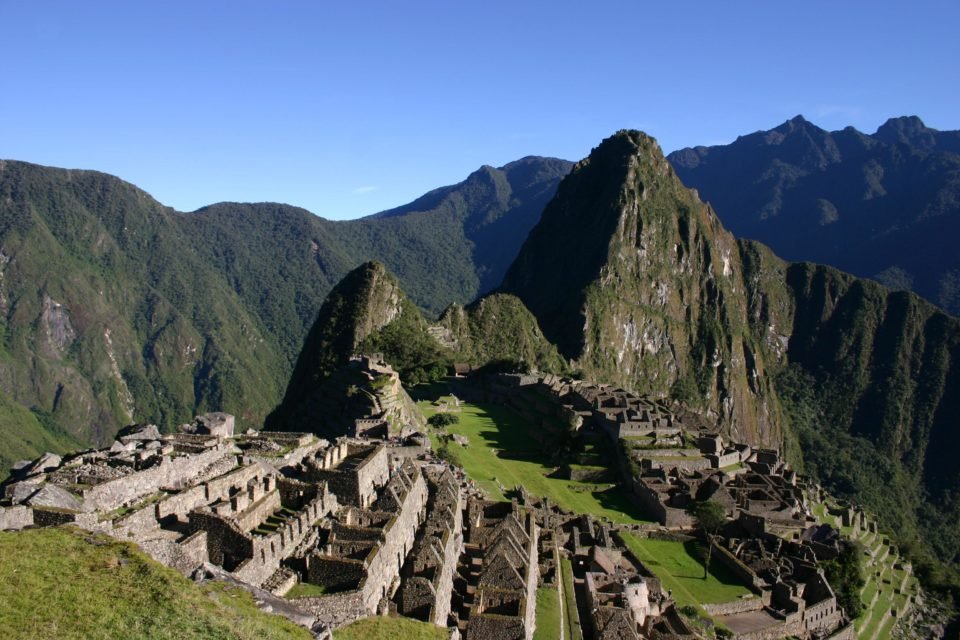South America is for everyone and is not really restricted to those who only choose to travel first class by air or stay in luxury resorts. There are plenty of beautiful exotic destinations that are not on the popular or most-visited list, yet they offer equally good, if not more, wonderful enticing sights that compare with the best. They may not come with the ‘best’, ‘biggest’ or ‘largest’ tags, bur nevertheless offer diverse landscapes and unique sights. For those who do not indulge in wasteful lavishness and would like to get ‘Value-for-Money’ for every dollar spent, without compromising on the quality of experience; Here is a list.
Top 10 value for money destinations in South America
Islas Ballestas, Peru
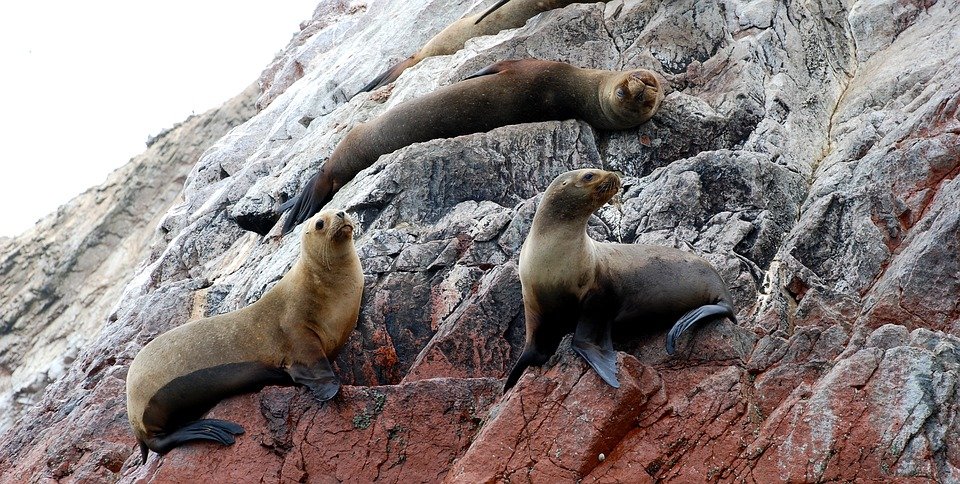
Nicknamed as ‘poor man’s Galapagos’, Islas Ballestas Islands are a group of small islands near the town of Paracas on the south coast of Peru. These islands, composed largely of rock formations, are a vibrant and colorful wildlife sanctuary for marine fauna like the guano bird, the blue-footed Peruvian booby, red-footed Guanay cormorant, Peruvian pelican, Chilean flamingoes and the tendril. Other notable species include Humboldt penguins, sea lions, dolphins and fur seals amongst other mammals. Islas Ballestas islands under the Reserva Nacional de Paracas, are accessible from the resort town of Paracas by tour boat during which the sea lions approach the tourist boats and present an interesting sight. There is the famous three-pronged Candelabra geoglyph, a giant mysterious symbol, carved on the sandstone cliff on the hills, which is over 150m high and 50m wide and centuries old. The islands have arches and caves, large herds of noisy barking sea lions on the rocks; and are full of birds and penguins.
Huacachina, Peru
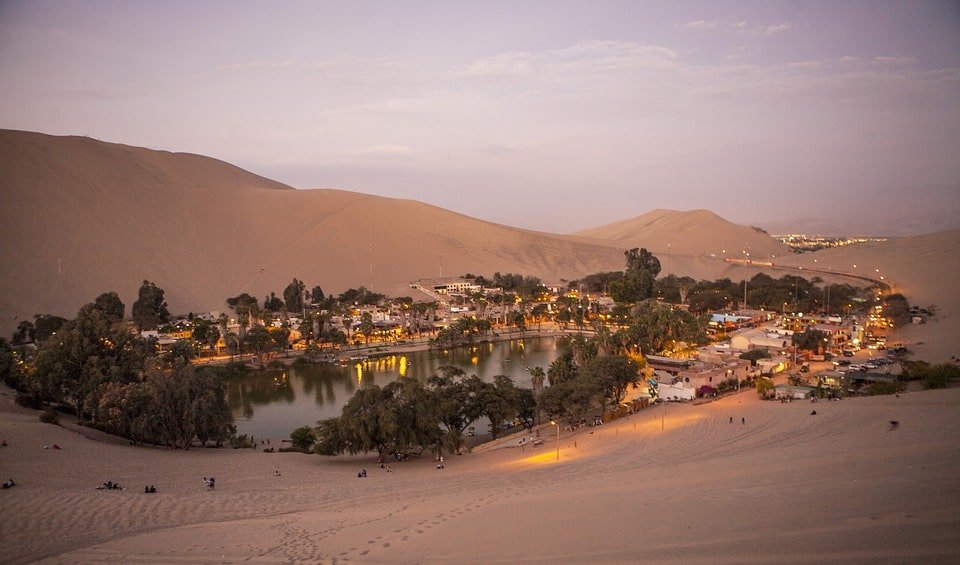
Huacachina, a unique fascinating destination, is a small desert village in southwestern Peru, built around a small oasis surrounded by massive sand dunes. It is an hour away from the Pacific Ocean and just 4 km from the city of Ica in the Ica District and 300 km south of Lima. The large turquoise colored lagoon has resorts and restaurants built around it. The oasis features on the back of the 50 Nuevo Sol currency note. It is also known as the “Oasis of America”, being one of the last oases in North and South America. The lake is naturally formed, but there is a legend that a young Inca princess was bathing when she saw a hunter and fled, leaving behind a pool of water which became the lagoon. Her flowing cloak was said to have created the surrounding sand dunes. The legend says the princess inhabits the lagoon in the form of a mermaid. There is a statue depicting this on the lagoon’s banks. The water and mud of the area is supposed to have curative powers. Huacachina is inhabited by around 100 descendents of the Inca people who host the visiting tourists. The vast sand dunes offer opportunities to sand board on sand dunes, and long rides across the desert on four-wheel drive sand buggies, known locally as areneros.
La Paz, Bolivia
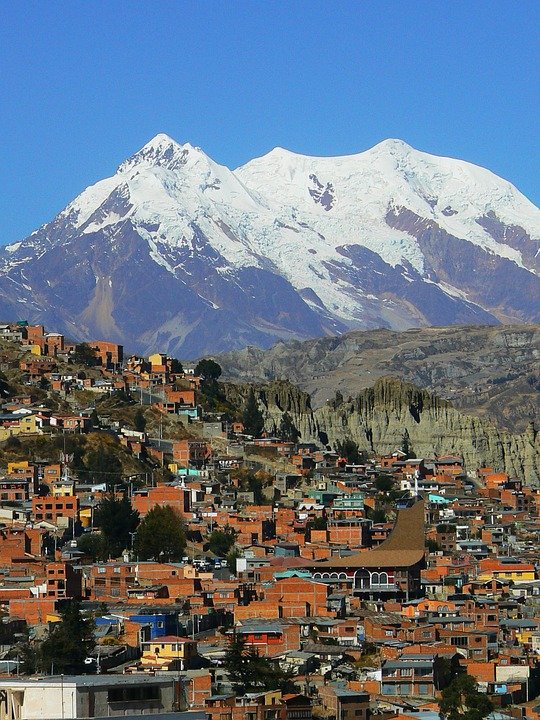
La Paz is Bolivia’s largest city and almost touches the sky at 10,000 feet or 3,660 meters above sea level. Although Sucre remains the judicial and constitutional capital, La Paz is the administrative capital and centre for commerce, finance and industry. Established in 1548, La Paz was built in a canyon created by the Choqueyapu River in the Andes. The satellite city of El Alto, in which the airport is located, is spread over a broad area to the west of the canyon, on the Altiplano. Both cities can be best viewed by the cable car “Teleferico” rides above the city, providing excellent views of the city with snowcapped peaks of Mount Illimani (6402m) as the backdrop. It is a crowded yet enchanting place that has a number of museums and unique markets, like the Witches Market which sells exotic charms and herbs. With quirky culture, beautiful scenery and many markets, museums and neighborhoods to explore, La Paz has a lot to offer. One can wander around to explore the city. It is a destination that needs to be lived into to experience the city’s many flavors and to acclimatize to the high altitudes. It has the highest golf course in the world. La Paz is also the starting point of many popular treks in the Andes.
Villa La Angostura, Argentina

Villa La Angostura is a small laid back mountain village in the heart of Patagonia region on the northwestern shore of Lago Nahuel Huapi. The village consists of two distinct areas: El Cruce, which is the commercial center along the highway, and La Villa, nestled against the lakeshore, 3km to the south. Puerto Manzano, in La Villa, is where boats leave for tours to the incredibly diverse Parque Nacional Los Arrayanes, which is a small peninsula extending about 12km into the lake. Nearby is a small but popular winter-sports center, Cerro Bayo for skiing and snow-boarding.Villa La Angostura is a fairy tale destination, in the heart of the mountain range and surrounded by ancient forests, rivers and lakes. It also has beautiful beaches and clear rivers. It is a perfect escape for those looking for the perfect place to renew their soul.
Ipojuca, Brazil
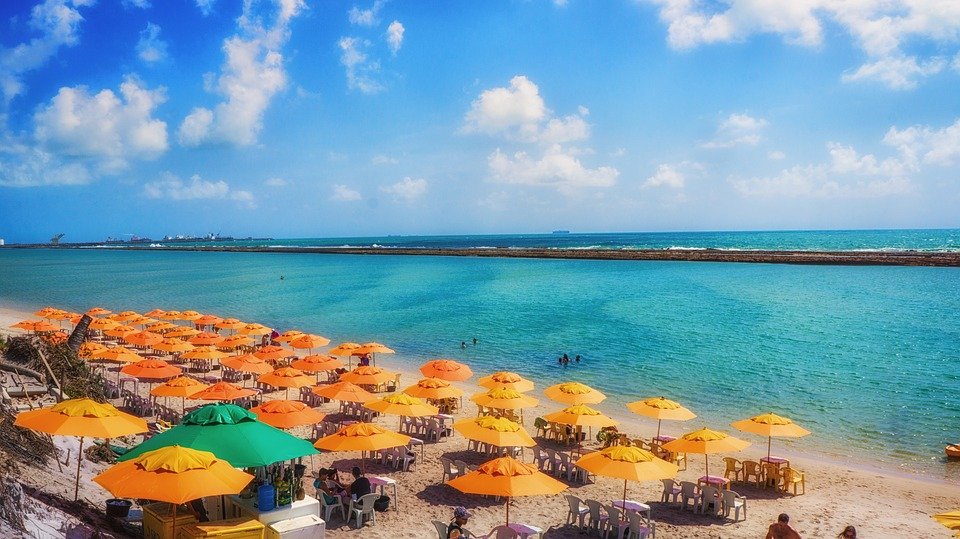
Ipojuca is a small town in Grande Recife, Pernambuco. It is well-known for its international port of Suape. The specialty of this place is that it has many beautiful beaches, which are visited in thousands by the tourists. In fact there are beaches which come in every flavor. The beach of Porto de Galinhas has been the best beach in Brazil. It has natural tide pools and silvery sands. Pontal de Maracaípe beach is at the estuary of the Maracaípe River, and is used for water sports such as canoeing and boat trips. Maracaípe beach is lined with coconut trees, has deep waters and huge waves, and is used for surfing. Muro Alto or “high wall” beach has a wall of natural reefs about 2 km long, which makes it suitable for canoeing and kayaking. It has hotels and “pousadas” which are like guesthouses with bed and breakfast. Cupé beach is a 4.5 km long beach and has coconut trees, summer houses, hotels, pousadas, hostels, bars and restaurants. One part of its coast is protected by natural reefs and has natural pools. The other part has no reefs and the sea is choppy with strong waves. Camboa beach, about a kilometer long, is quiet and shallow with natural pools and is lined with coconut trees. Serrambi beach is popular for scuba diving due to the presence of several shipwrecks from different historical periods ranging from the Colonial Brazil period, 500 years ago, to the world wars. It has restaurants and bars. Among the many historic buildings, there is the Convento de Santo Antonio which was founded in 1606.
Valparaiso, Chile
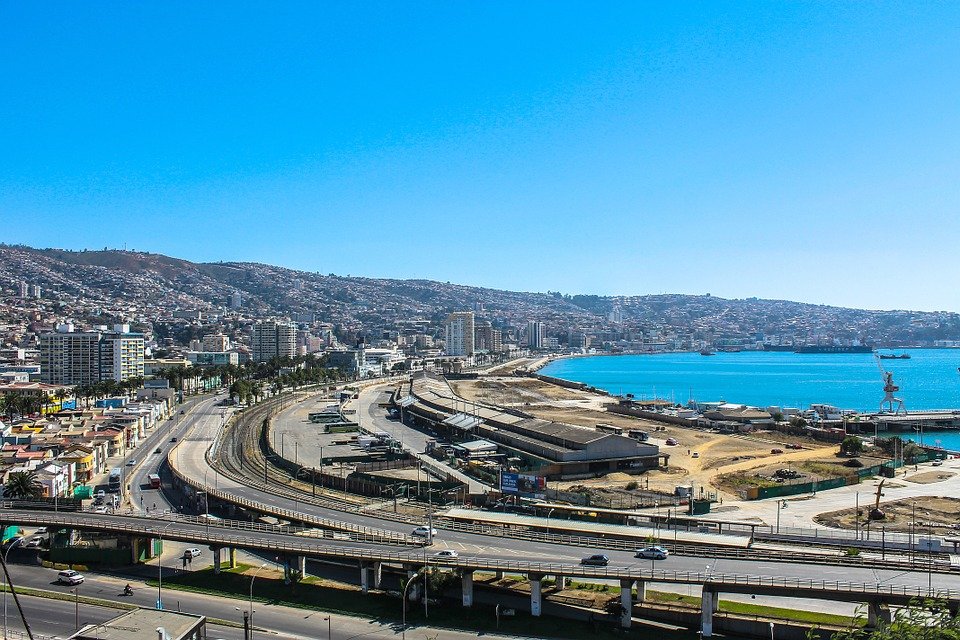
Known as the ‘Jewel of the Pacific,’ Valparaiso is a UNESCO World Heritage City. Located on the Pacific coast of central Chile, it is about 120km west of the capital Santiago. Fondly nicknamed ‘Valpo’, it is Chile’s main port and known for its bohemian culture, brightly colored houses, artistic vibe and lovely seaside vistas. Instead of any specific site, Valparaíso is more of an experience about roaming the chaotic hills called Cerro Alegre and Cerro Concepción, narrow streets and charming colonial architecture of 19th century mansions; climbing its endless staircases called escaleras, alleyways, squares, promenades, and taking in the views and ambiance from its many lofty viewing points. Valparaiso has 100 year old historic funicular Ascensor Artillería railway system, which are like cabled elevators. It has an active nightlife, fine food and wines, and a constantly changing variety of artistic events. World famous poet and writer Pablo Neruda belonged to this city and his house has been converted into a museum. Other prominent landmarks are Palacio Baburizza and the Museo de Bellas Artes.
Asuncion, Paraguay
Asuncion is the national capital of Paraguay and is located on the left bank of the Paraguay River, at the confluence with the River Pilcomayo. Founded in 1537, Asunción is one of the oldest cities in South America and is also known as “Mother of Cities” because from here the colonial expeditions started to found several other cities. Asuncion is considered the ‘cheapest’ capital city in the world in terms of cost of living, which makes it a very attractive destination for tourists. The city has has 30% of the population of Paraguay and is the country’s economic capital too. The Silvio Pettirossi International Airport connects it with the world. The city can be explored on foot and the two-mile riverfront walkway La Costanera and Mariscal Lopez Avenue are very popular. Calle Palma is the main street downtown where several historical buildings, plazas, shops, restaurants and cafés are located. The city spreads out over gentle hills in a pattern of rectangular blocks. Tourists’ spots include Cerro Lambaré, a beautiful hill; Parque Independencia and Parque Carlos Antonio López parks; and several small hills throughout the city, such as Cabará, Clavel, Taruma, Cachinga, and Tacumbu. Monuments to visit include Panteon Nacional de los Heroes, Casa de la Independencia, Catedral de Nuestra Senora de Asuncion, Church of La Encarnación,and the Metropolitan Cathedral.The city has several museums like the Godoi Museum, the Museo Nacional de Bellas Artes; and monuments like the and the National Pantheon of the Heroes. The city has been a centre of music, poetry and the arts, and also hosts several symphony orchestras, and ballet, opera and theater companies. Asuncion has a vibrant nightlife which revolves around two areas: one in the downtown part of the city and the other in the neighborhood of Manora and Las Carmelitas. There are many popular nightclubs and bars dispensing the best drinks and entertainment.
Kaieteur Falls, Guyana
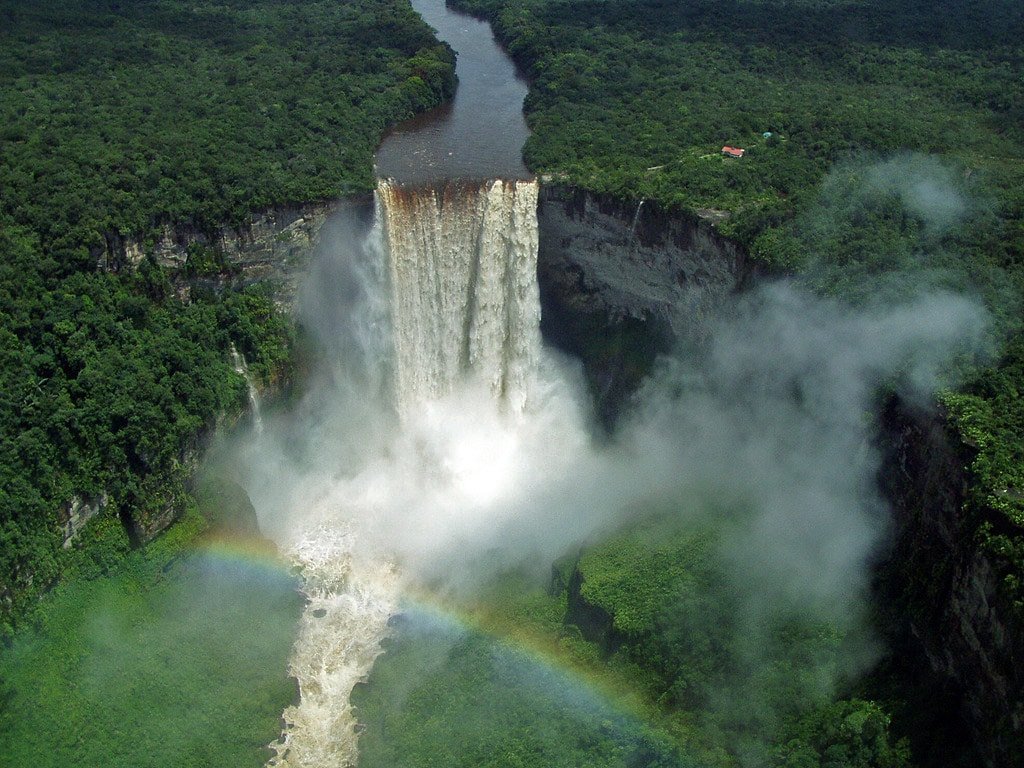
Kaieteur Falls, with its 251 meter high waterfall is five times taller than Niagra and the highest single drop falls on earth. It is located on the Potaro River in the Kaieteur National Park, in Essequibo, Guyana. Its location is in the Amazon forest on the Guiana Shield which is a plateau known as one of the earth’s oldest and most remote geological formations. It is reached by air from Cheddi Jagan International Airport in Georgetown to Kaieteur Airstrip, from where the falls is just a 15 minute walk. Often tourists take a week-long trek through the Amazon up to the falls.
Los Roques, Venezuela
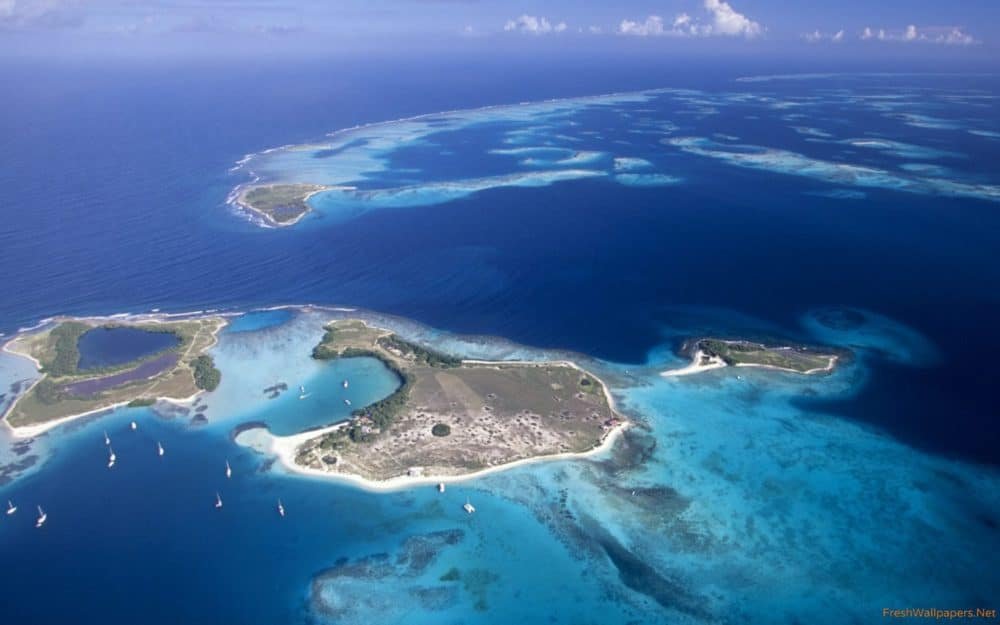
Archipelago de Los Roques is a chain of islands and coral reefs in the Caribbean Sea about 160 kilometers north of the capital Caracas . There are about 350 islands, cays and islets, surrounding a 400-sq.-km lagoon. The archipelago’s coral reef presents a great attraction for snorkeling and scuba diving. Its pristine white-sand beaches are surrounded by dazzling clear waters giving ample opportunity for windsurfing, fishing and sailing. Other activities include fishing for bonefish, barracuda, tarpon and Spanish mackerel, bird watching, paddling, windsurfing, and kite-surfing.The major islands of the archipelago have an atoll structure, with two external barriers formed by corals and an inner lagoon and sandy shallows. It has the main island, Gran Roque, which is a collection of small villa-style hotels called posadas and restaurants.. It has a small airport, Los Roques Airport, for small aircrafts. Other important islands are Cayo Grande, Francisqui, Nordisqui, Madrisqui, and Crasqui. There is a sea turtle research center and sanctuary located on Dos Mosquises. The archipelago is home to 280 species of fish and nearly 100 different bird species.
Quito, Ecuador
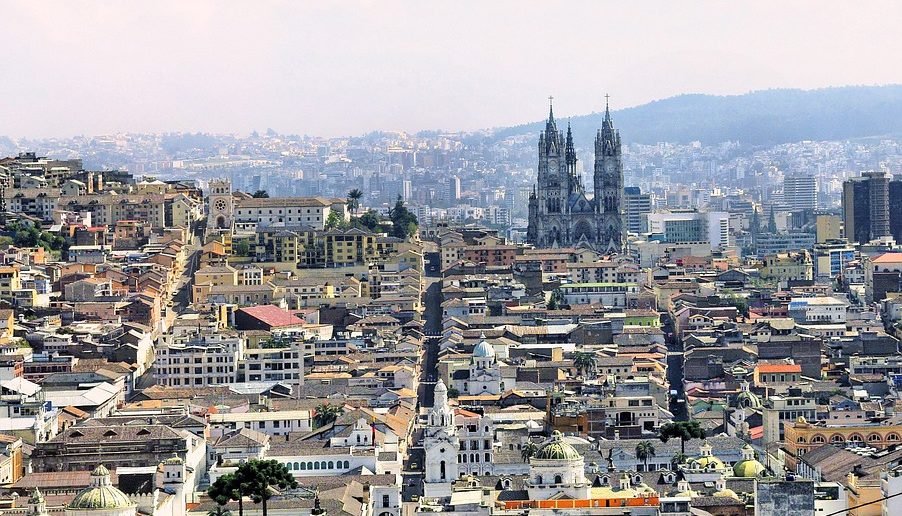
Quito, is the capital city of Ecuador, and at an elevation of 2,800 meters above sea level, it is the highest capital city in the world. Formally known as San Francisco de Quito, it is the “most beautiful big city in South America” for its high location between towering mountain peaks of the Andes, with the snow-topped Antisana, Cotopaxi and Cayambe volcanoes looming over the city skyline. Quito is located almost at the Equator, which is what Ecuador means in Spanish. Quito Old Town is the first-ever locale in the world to be designated a UNESCO World Heritage Site. This is the largest well-preserved historic center in the Americas and full of 17th century colonial monuments and architectural treasures. It has ancient thick-walled, tile-roofed colonial buildings, 40 churches, 16 convents and monasteries, museums, and more for which it has earned the sobriquet of the ‘Reliquary of the Americas’. These include the gold-gilded La Compañia de Jesus Church and the neo-gothic Basilica del Voto Nacional with a high bell tower and adorned with native animals; San Francisco and Santo Domingo monasteries; the city’s most impressive art museums, the Capilla del Hombre. Teleferico is the world’s second-highest cable car, and a popular attraction. La Virgin del Panecillo is a large statue of the ‘winged’ Virgin Mary in a hilltop and is visible from a distance. Quito’s surrounding valleys, Valle de Tumbaco and Valle de los Chillos have great outdoor eco-tourism opportunities such as mountain biking. Quito is full of huge parks, excellent and unique museums, theatres and arts and cultural events. It is also a shopper’s paradise for handicrafts and artisan crafted articles. The cuisine is great and very reasonably priced. In fact, Quito is a very economical city, with cheap transport system and even a week’s stay, which is what one needs to explore it fully, is not very financially stressful.
These 10 Value-for-Money destinations in South America have been selected from a bigger list of wonderful destinations, on the sole criterion of getting the biggest bang for your money.These are no longer just back-packers most sought-after destinations, but are becoming popular with the mainstream tourists.
These are the places which will easily jell with any other itinerary that includes that country or those in the neighborhood, that you may have planned for. Moreover, these places are the ones where you can stay longer and stretch your vacation to explore more in or around these destinations.
Travel to South America – Other related topics
Top 10 Must See Places in South America
Top 10 Most Adventurous Places in South America
Top 10 Honeymoon Destinations in South America
Dos and Don’t of Traveling to South America
Top 10 Most Beautiful Places in South America

